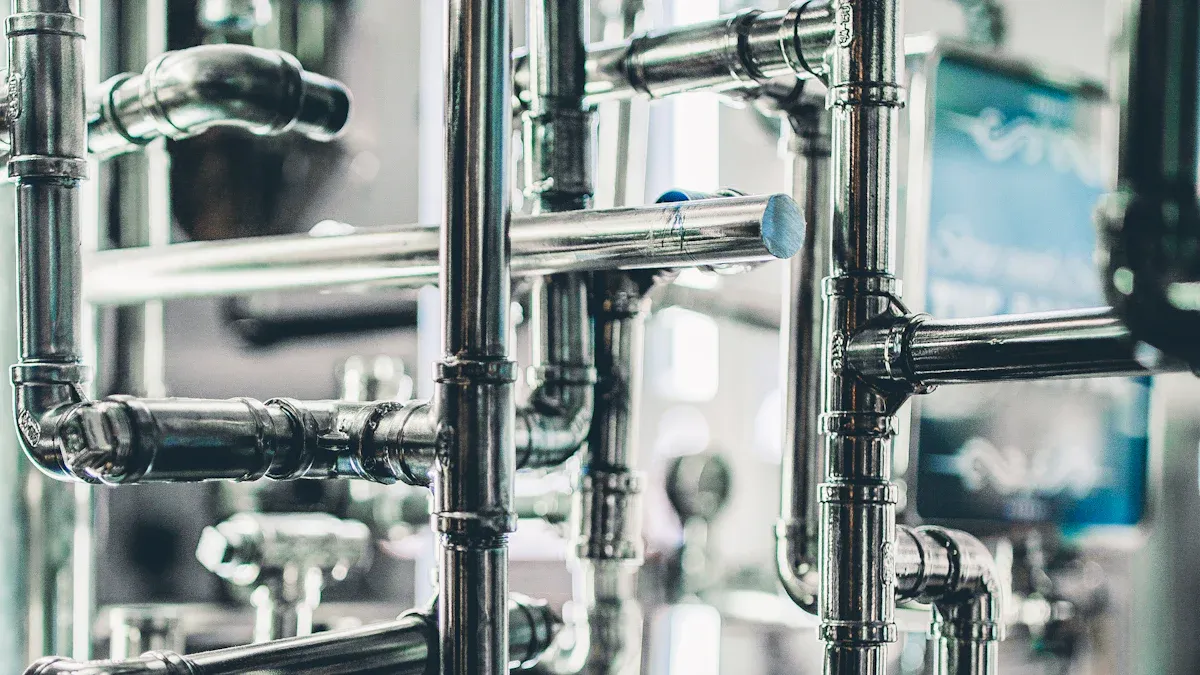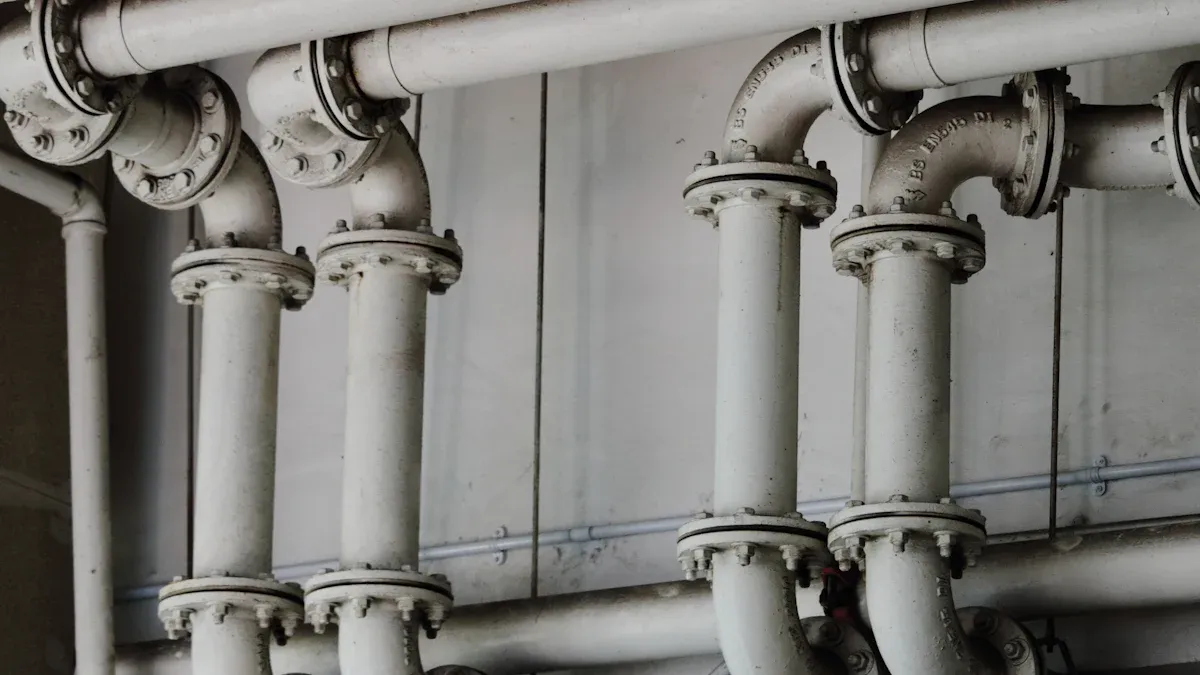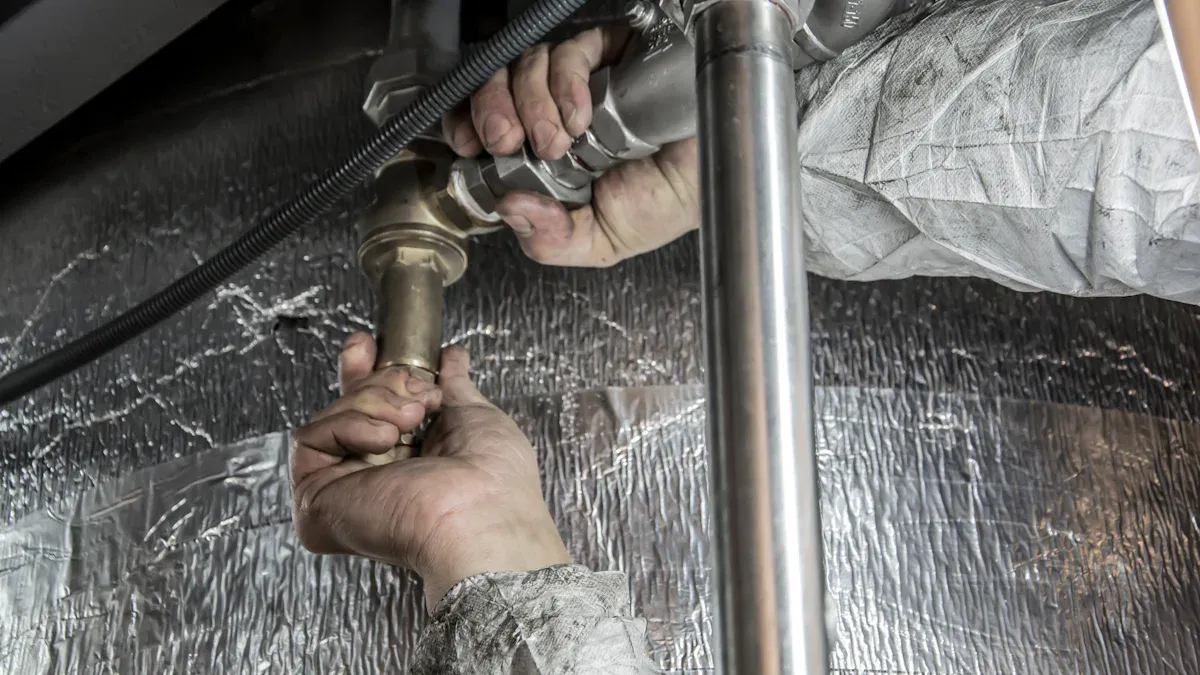- All
- Product Name
- Product Keyword
- Product Model
- Product Summary
- Product Description
- Multi Field Search
Views: 0 Author: Site Editor Publish Time: 2025-05-27 Origin: Site


A food grade stainless steel tube is essential for ensuring food safety, playing a vital role in maintaining cleanliness throughout food production, transportation, and storage. Its smooth surface prevents bacterial growth and allows for easy cleaning, while its resistance to absorbing odors, colors, or chemicals makes it ideal for environments requiring frequent sanitation. Made from materials like 304 stainless steel, these tubes meet strict food contact regulations and are highly corrosion-resistant, ensuring long-term cleanliness and protection against contamination. Their durability against food acids and daily wear helps preserve food freshness and maintain high product quality.
Stainless steel tubing for food is important to keep food safe. It stops bacteria from growing and keeps things clean.
Its smooth surface is easy to clean. This saves time and makes hygiene simple.
Stainless steel is strong and doesn’t rust. It can handle tough conditions without breaking down.
Using stainless steel meets strict food safety rules, like FDA and 3-A standards.
Stainless steel is good for the planet. It can be recycled and helps make food production eco-friendly.

A food grade stainless steel tube has a smooth surface. This surface stops bacteria, dirt, and germs from sticking to it. Stainless steel stays clean because it does not soak up food or liquids.
It also resists rust, which is important for food use. Food production often involves water and acids, so this feature is helpful. Standards like ASME BPE and ASTM A270 ensure the surface is smooth enough to avoid germs. Choosing stainless steel tubing keeps your food processes cleaner.
Cleaning stainless steel tubes is simple and quick. The smooth surface lets you wipe off dirt without leaving stains or smells. This saves time and effort, especially for industries that clean often.
You can use strong cleaners, hot water, or steam on stainless steel. These methods will not harm the material. This makes sure your equipment stays clean and ready to use.
Stainless steel tubing stops bacteria from growing. Its smooth surface gives bacteria no place to hide or multiply. This helps keep food safe during production and storage.
Stainless steel also resists stains. It does not soak up food colors, smells, or chemicals. This keeps food fresh and high-quality. These features make stainless steel tubing perfect for clean food processes.
Food production uses strong chemicals, water, and high heat. Food-grade stainless steel tubing works great in these tough conditions. It resists rust and stays safe for food contact. Even cleaning agents or acids won't harm it.
Tests show how well it fights rust. Below is a table showing how surface treatments affect rust resistance in salty conditions:
Surface Treatment | Pitting Potential (V vs. Ag/AgCl) | NaCl Concentration (g/L) |
|---|---|---|
Ground Specimen | 155 | 0.5 |
Chemically Passivated | 271 | 0.5 |
Satin Finish | 0.343 | 1 |
After Passivation | >0.7 | 1 |
The table shows that passivated surfaces resist rust best. This makes them perfect for food processing.
Stainless steel tubing is very strong and lasts a long time. It handles daily use without breaking or wearing out. This means fewer replacements are needed over the years.
Its smooth surface stops bacteria from growing. This keeps food clean and safe. These features make it a top choice for food and drink industries.
Using stainless steel tubing saves money over time. It resists rust and damage, so repairs are rare. Cleaning it with steam or chemicals is easy and doesn’t harm it.
Stainless steel pipes often last longer than the buildings they’re in. This lowers replacement costs. Choosing food-grade stainless steel tubing keeps food safe and saves money for your business.
Following food safety rules is very important in food production. Food-grade stainless steel tubing follows strict rules, keeping things clean and safe from germs.
The FDA makes strict rules for materials that touch food. Stainless steel tubing follows these rules because it is safe and doesn’t rust. The FDA says food-contact surfaces must be smooth, nonporous, and easy to clean. Stainless steel meets these needs, so no harmful stuff gets into food or drinks.
Stainless steel also doesn’t react with acidic or alkaline foods. This keeps your food products safe and unchanged. Using stainless steel tubing helps you follow FDA rules and keep food safe.
The 3-A Sanitary Standards are well-known for food safety. These rules focus on using stainless steel and other safe materials in equipment. They also require good manufacturing practices to stop contamination.
Important 3-A rules include:
Welds must use TIG (GTAW) for strength and accuracy.
Inert gas during welding stops rust and keeps tubing strong.
Use 300 series stainless steel for pipes, especially in milk processing.
Welds must be smooth to stop bacteria from hiding.
Following these rules ensures your stainless steel tubing is clean and safe.
Stainless steel tubing meets both local and global safety rules. These certifications prove it works well and is safe for worldwide use.
Certification | What It Ensures |
|---|---|
Quality control and constant improvement. | |
Meets global stainless steel standards. | |
ASME Compliance | Needed for high-pressure and industrial uses. |
PED Certification | Required for European suppliers. |
Third-Party Inspection Reports | Shows honest product testing. |
These certifications show stainless steel tubing is reliable and safe. Whether local or global, it meets all safety and quality needs.

Food-grade stainless steel tubes are important in food industries. They stop biofilm from forming, keeping production areas clean. Their smooth surface makes it hard for bacteria to stick.
In dairy processing, these tubes handle milk safely without losing quality. In the beverage industry, they are used in making drinks like soda and beer. For example, craft breweries grew 34% worldwide from 2018 to 2023. This shows how these tubes help avoid mixing flavors. They also work well with Clean-in-Place (CIP) cleaning, ensuring cleanliness.
Tip: Following rules like the EU’s Regulation (EC) No 1935/2004 stops harmful substances from entering food or drinks.
Stainless steel tubes are great for moving liquids and semi-solids. They don’t pollute food or drinks, keeping them safe. These tubes meet strict cleanliness rules, making them perfect for food pipelines.
Characteristic | Description |
|---|---|
Non-polluting | Stainless steel tubes keep food and drinks uncontaminated. |
They follow strict cleanliness rules for food and drinks. | |
Versatile applications | Used in pipelines for food processing and drink filling. |
This makes stainless steel tubes a top choice for safely moving food products.
Cross-contamination is a big problem in food production. Stainless steel tubes help reduce this risk. Their smooth surface stops food from sticking, which lowers bacteria growth. Studies show bacteria like L. monocytogenes don’t survive well on clean stainless steel. But food leftovers can help bacteria live longer.
Cleaning these tubes often cuts contamination risks even more. For instance, cleaning cloths without disinfectant can lower L. monocytogenes by 2.62 log CFU/cm². This proves that keeping stainless steel clean improves food safety. Using food-grade stainless steel tubes creates a safer production space and protects your food from harmful germs.
Stainless steel is a very eco-friendly material. It can be recycled completely without losing its strength or quality. This makes it a great option for food-grade tubing. A study shows that stainless steel has about 48% recycled content worldwide. Some types, like Alleima's 316L stainless steel, have up to 95.6% recycled material. Choosing stainless steel helps cut down on waste and lowers carbon pollution.
Recycling stainless steel also uses less energy than making new steel. This saves resources and supports green practices. When you pick stainless steel tubing, you help create a system where materials are reused instead of thrown away.
Using stainless steel tubing helps make food production more eco-friendly. Its strength means it lasts a long time, so you don’t need to replace it often. This reduces waste and saves money over the years.
Stainless steel’s ability to be recycled also supports green food production. Using materials with high recycled content helps the environment. It lowers the impact of your business on nature. Programs that certify green buildings recognize stainless steel as a sustainable choice. Picking stainless steel tubing shows your business cares about the planet.
Stainless steel tubing keeps your food and drinks pure. It doesn’t react with acidic or basic substances, so it won’t change the taste or quality of your products. This makes it perfect for foods like dairy, wine, and juice.
Tip: Stainless steel’s smooth surface stops contamination. This keeps your food tasting fresh and original. By using stainless steel tubing, you can provide high-quality products while helping the environment.
Food-grade stainless steel tubes are key for food safety and sustainability. They are clean, strong, and meet strict safety rules. This makes them important for food production. The need for 304 stainless steel is growing fast. It may reach USD 32.5 billion by 2031, growing at 4.2% yearly. Using good food-grade stainless steel tubes keeps food safe and high-quality. It also helps follow rules and supports eco-friendly practices.
Food-grade stainless steel tubing has a smooth surface. This surface stops bacteria and stains from sticking. It follows strict rules like FDA and 3-A Standards. These features keep food safe and prevent contamination.
Yes, it can. Stainless steel does not rust from acidic foods. It is strong and won’t react with food. This keeps the taste and quality of your food safe.
Use hot water, steam, or safe cleaning products. Its smooth surface makes cleaning easy. Regular cleaning keeps it hygienic and stops cross-contamination.
Yes, it is! Stainless steel can be recycled completely. Using it helps reduce waste and supports eco-friendly practices. Many stainless steel items are made with recycled materials.
It lasts longer, doesn’t rust, and meets safety rules. Unlike plastic or other metals, it doesn’t hold smells or chemicals. Its strength and cleanliness make it great for food industries.